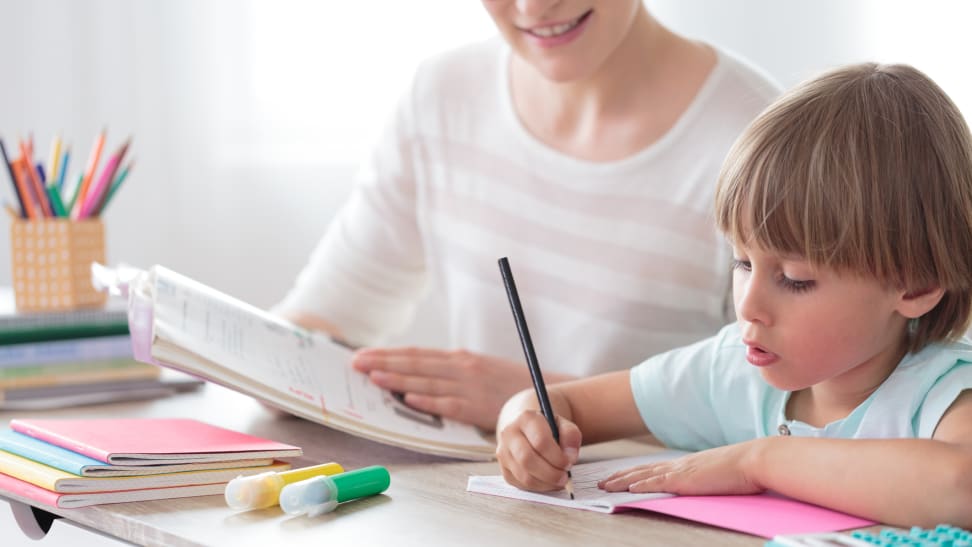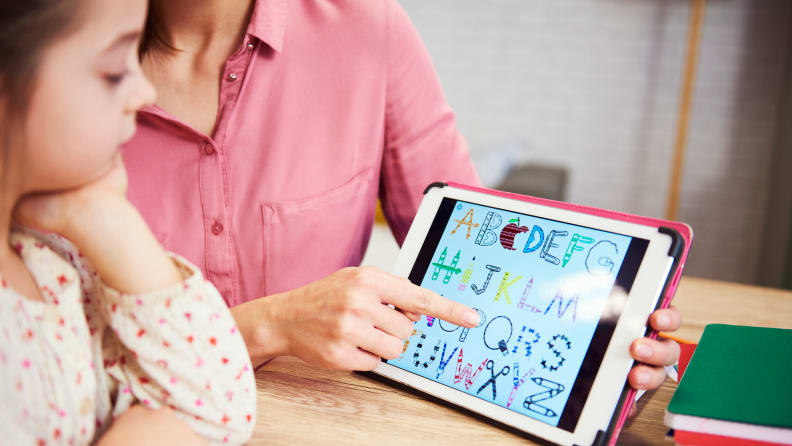 Credit:
Getty / KatarzynaBialasiewicz
Credit:
Getty / KatarzynaBialasiewicz
Recommendations are independently chosen by Reviewed's editors. Purchases made through the links below may earn us and our publishing partners a commission.
With schools across the country closing their doors temporarily, parents who would usually be sending their kids back to school find themselves wondering how to keep their kids learning at home. In other words, we are all homeschoolers—at least for the time being.
Homeschooling can be tough. I know this from first-hand experience as a mother of three who works from home and homeschools. It can be really, really difficult, but it doesn’t have to be. And trust me, if I can do it, so can you. Especially if it’s only temporary.
While you may be tempted to order a school desk, find full-blown curriculum, and install the chalkboard on your dining room wall, rest assured that you can keep your kids learning and engaged with very little expense. The following is a list of items collected from my own experience and feedback from the homeschool moms at Practical Homeschooling's Facebook community to help you figure out what you need—and what you don’t need—to make your temporary homeschooling experience successful and enjoyable for everyone involved.
You will need:

A tablet or laptop opens up a world of free educational resources to your child.
1. A kid-safe computer/tablet
While we all know too much screen time is harmful, there are so many educational resources online that can be extremely helpful, in moderation. A growing number of homeschool-friendly sites are offering temporary free membership to parents hoping to keep their kids learning until school resumes. To avail yourself of those resources, though, you’ll need a kid-friendly tablet or computer for your kid to use. We love the Amazon Fire HD 8 Kids Edition, and in our testing, it was hands-down the best tablet for kids.
Get the Amazon Fire HD 8 Kids Edition from Amazon for $129.99
2. A printer
A lot can be accomplished online, but kids still need to work on their handwriting, and studies show that physically writing notes helps our brains to retain information better.
"What I needed was quality curriculum in reading, writing, and math; a printer; and a good computer," says Mary, who homeschools kids in first and second grade. "Everything else has fallen into place."
With a good printer, you can find everything you need on sites like Education.com, Easy Peasy All-in-One Homeschool, and even Pinterest. You can even request coloring pages by voice command if you get a smart printer like the HP Tango X.
Get the HP Tango X printer from HP for $199.99
3. Volume-limiting headphones
If your student needs a little more help with a concept than you can give, there are plenty of instructional videos that can be found online. Audio books and playlists are also good ways to fill the time, but if you let your kid use headphones, just be sure to get them good volume-limiting headphones so they can’t listen at hearing-damaging levels.
Get Puro Sound Labs PuroQuiet Kids Headphones from Puro for $99.99
4. Craft supplies
Just about any lesson can be made more enjoyable with the use of a craft project. Cotton balls for demonstrating cloud types, popsicle sticks and pipe cleaners for building structures, watercolors for finding out what happens when you mix different colors together… you can teach so much with just a handful of supplies. Check Pinterest for the lesson you’re teaching and you’ll find endless fun options.
5. Reasonable expectations
You may find yourself wanting to make your home run just like a school, but even seasoned homeschool parents say that approach is unnecessary and, often, unachievable. One of the best things about teaching kids at home is the amount of flexibility you have.
You start when you want, take breaks when you want, move at your own speed, and you can tailor it all to your child. Expect that it won’t always (ever?) go as planned. Be open to something new and different, and know there’s really not a moment in the day when your kid isn’t learning something.
6. An outlet for physical energy
Being out of school means your child is missing more than math and language arts—they’re also missing recess and physical education. Being stuck at home means they need, more than ever, a way to expend physical energy. It’s tough to focus on learning when kids are struggling to sit still, so find ways for them to move, frequently. Pull up Cosmic Kids Yoga on YouTube, get a jump rope, a punching bag with boxing gloves, a soccer set for the backyard, a fitness band to gamify movement, or (if they’re old enough) just have them go for runs around the neighborhood.
You won't need

You definitely don't have to turn your home into a school.
1. A full curriculum
Plenty of homeschool families order full curriculum packages, but another great thing about being your kid’s teacher is that you can pull resources and lessons from just wherever you want. Don’t waste your money on a curriculum if this is only going to be temporary—just find some online lessons or worksheets and that will be more than enough.
2. A cute little school desk
Tricia has been homeschooling her two girls for a total of nine years. "We've never needed a school desk or flag," she says, "and we don't need a super rigid schedule. I have found that I do need a support group, a basic schedule, an enthusiasm for learning with them."
It’s tempting to assemble a formal schooling space, but it’s tough for kids to stay in one spot for very long, as you know, and they don’t need to when they are homeschooling. Let them learn where they are most comfortable: the couch? The dining table? On the porch? A different spot every day?
3. A chalkboard or whiteboard
Your house is not a school. There is no need to pretend that it is. Most of what can be drawn on a chalkboard for a room full of students to see can be demonstrated very easily on a piece of paper or tablet for one or two students. You don’t need much equipment to keep your child learning.
4. Public school start and stop times
While public school is an all day affair, you’ll be surprised how much a child can learn in a short amount of time when they can move at their own pace. Depending on the grade, it’s not unusual for a homeschool kid to move through all of their lessons within two or three hours. Don’t panic if it’s not taking all day—it shouldn’t.
"The kids work best at their pace, in their place, and pretty much in their time," says Britanie, who currently homeschools kids from age 1 to 11. "No chairs or walls needed."
5. A teaching degree or expertise
You probably don’t have an education degree, and that’s totally fine. You’ve been teaching your kid their whole life. All the basic skills needed to be a successful human, they learned from you. You understand their learning style better than anyone else, and you have everything you need to teach them.
Perhaps the best part about homeschooling is that you have the freedom to change approaches if what you’re doing isn’t working. So be willing to do some experimenting with the methods you choose, as you probably won’t find your perfect rhythm within the first week. Give yourself and your child plenty of grace, and when you could all use a free day of pajamas and TV and junk food, grant yourselves that rest. Occasional refreshing goes a long way in preventing burnout.
In short? You’ve got this! And you’ve got an internet full of groups and resources and worksheets and advice for those moments that it’s not going as you had hoped (it happens to all of us).



